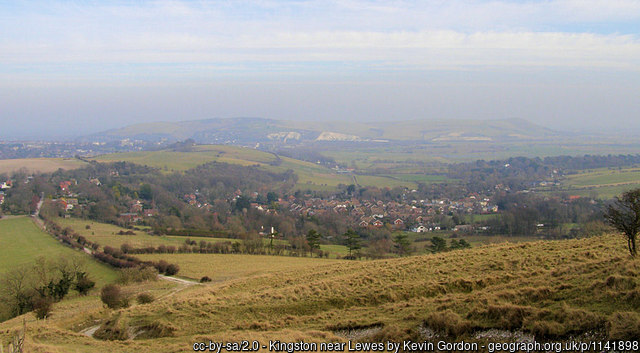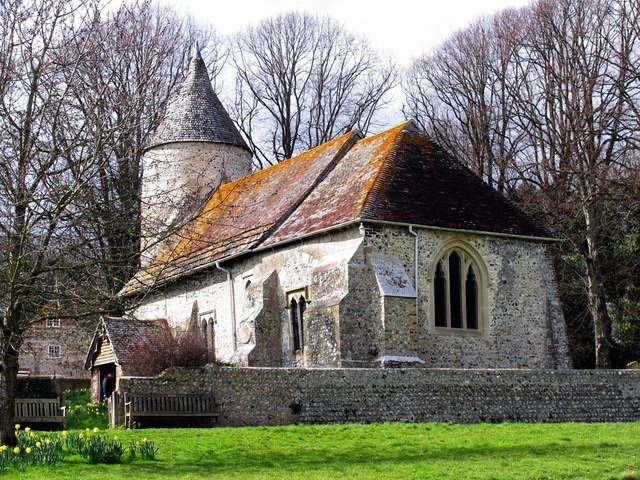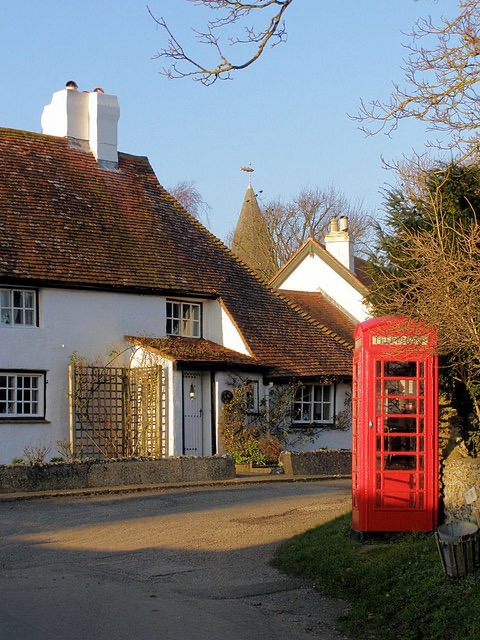
On one hot August day W. H. Hudson stood here on the top of Kingston Hill in a special moment of elation feeling the peace of these timeless South Down hills.
Nature in Downland
I have grown to love this old book about the South Downs written over a hundred years ago by W H Hudson. He walks with skylarks overhead and with the cloud shadows skirting across the hillsides, all the while enjoying the expansive views and listening in the stillness. He talks with shepherds and workers in the fields. He chats with village folk and visits their inns and churches. He gives us a homely picture of the downs and their local people over a hundred years ago:
‘No sooner had I begun to walk on and to know and
grow intimate with these downs than I found they had a thousand un-imagined pleasures, springing up in my way ….-a pleasure for every day and every hour, and for every
step, since it was a delight simply to walk on that elastic turf and
to breathe that pure air.’

The Ouse Valley
The Sussex Downs are full of treasures, quiet places that the wise and discerning visitor will cherish and seek out. One such place in East Sussex is the Ouse valley with its villages and churches clustered under the mighty limbs of the downs above:
Here through the strong and shadeless days
The tinkling silence thrills;
Or little, lost, Down churches praise
The Lord who made the hills.
From ‘Sussex‘ by Rudyard Kipling
I am drawn by the unadorned simplicity and peace of these ancient villages and their churches, some of them of Saxon origin. They grace the river Ouse like pearls in a necklace set along the edges of these Sussex downs.
Last year I wrote about the beautiful village of Kingston. Beyond, in Rodmell, is Monks House, former home of writer Virginia Woolf with links to the Bloomsbury Set of artists and writers. The house is now run by the National Trust.

Further on is one of my favourites, Southease church, nestling among the trees in its tiny village at the base of the downs, beside the water meadows of the Ouse river. Walkers on the South Downs Way pass by the church on their way across the small river bridge. The nave of the church has Saxon origins. The round tower was built c 12th. It’s not hard to worship the Creator in an idyllic spot like this. No wonder a church was built here. When I last visited, a number of years ago, having no camera, I made a pencil sketch and the peaceful scene has remained in my memory ever since.

Further down the valley is Piddinghoe village set on the banks of the river. This is the old post office with the church’s round tower and gilded fish/dolphin weather vane visible over the roof tops. (Photo by Kevin Gordon – geograph).
Or south where windy Piddinghoe’s
Begilded dolphin veers
And, red beside wide-bank’ed Ouse
Lie down our Sussex steers.
from ‘Sussex‘ by Rudyard Kipling

Across the river, the church at Bishopstone in its tiny village surrounded by the ever-present downs, is another delightfully peaceful place. Hudson describes attending a Sunday service here to honour the forgotten poet James Hurdis who was born here and became vicar of the parish. His poem The Village Curate in the 1790’s was based on this village and its rural life.
Like Richard Jefferies before him, Hudson was an observant naturalist, but he also had a deep emotional feeling for the nature of downland and its local people. He writes as a poet as well as a naturalist. This makes reading his books so satisfying for those of us who love these Sussex downs as he did.
Some of his other books are Hampshire Days (1903), Afoot in England (1909) and A Shepherd’s Life (1910). All lovely reminders of a forgotten English country life in the past. A recent reviewer commented that they:
‘Read like a lost hymn, sung by people whose lives were disregarded and whose histories are now forgotten’.
All the more reason to read and treasure these records of the past.
I love ‘A Shepherd’s Life’ and Martin Down where Wiltshire, Hampshire and Dorset meet.
LikeLike
A lovely part of Southern England too. Life was hard for country folk in those days, but these memories of their humble lives are delightful.
LikeLiked by 1 person
They do seem like little gems of villages Richard.
LikeLike
Yes, Sussex and these South Downs are full of other villages like them.
LikeLike
Hello from West Sussex. A big thank you for your lovely article and photos. I was brought up in Sussex from the age of 2 near Chichester and am very fond of Sussex. The run of the Downs is a great Kipling poem too.
LikeLike
Hi there.Thank you for your comment. I’m glad to hear from another lover of Sussex. Interestingly I have a post waiting with some of my sketches of Sussex based on Kipling’s ‘The run of the Downs’.
LikeLiked by 1 person